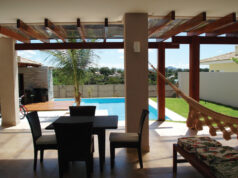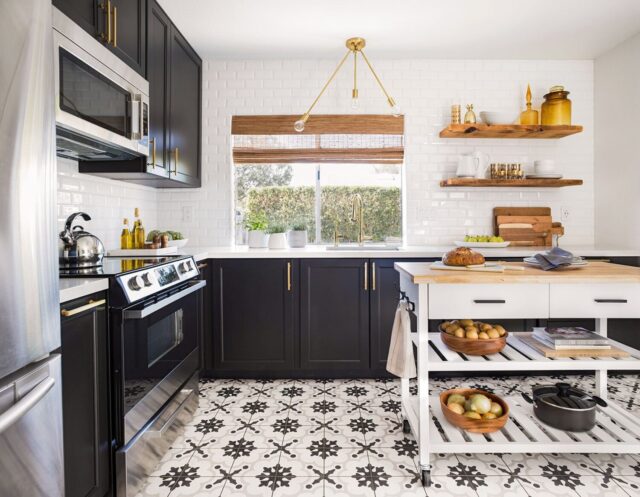
When designing your kitchen, one of the most important considerations is the layout. You’ll want to plan the layout to optimize workflow and make the space as functional as possible. Consider the main zones of a kitchen – storage, cleaning, cooking, prep, and eating. Arrange these zones in a way that minimizes steps between tasks. For example, have your cleaning zone near the cooking zone so you don’t have to walk far to grab a dish towel.
You’ll also want to ensure you have ample counterspace and storage. No one likes a cluttered kitchen. Having sufficient cabinets, drawers, pantries, and open shelving will help keep everything organized. Consider adding pull-out shelves in corner cabinets and base cabinets to maximize every inch of space. When planning your counters, look for opportunities to include additional prep space, landing zones, and eating areas.
Choosing the Right Surfaces
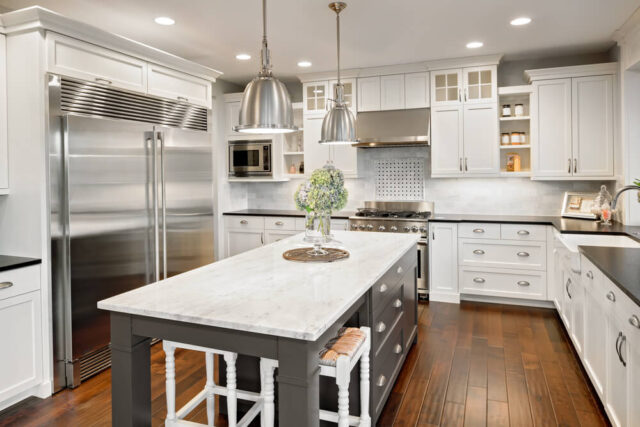
The good folk over at Bedrock Quartz say that the surfaces you choose for your kitchen can make a big impact both visually and functionally. When selecting countertops, durability and ease of maintenance should be top priorities. Granite countertops are a popular choice as they are very durable, come in numerous color varieties, and have a classic, timeless look.
For cabinets, choose wood species that are resilient to moisture and heat, such as maple or oak. Consider glass-front cabinets to allow light to permeate dark corners of the kitchen. For the backsplash, ceramic tile is a practical yet attractive option. Subway tile is a classic look that complements most color schemes. Natural stone and metal backsplashes can also add visual appeal.
Selecting Kitchen Appliances
Appliances are essential functional elements of any kitchen. Luckily, today there are a wide variety of high-performing, energy efficient appliance options to suit every budget and kitchen layout.
When selecting a refrigerator, first determine what configuration would work best for your space – side-by-side, French door, or bottom freezer. Think about features that are important to you, like through-door water dispensers.
For cooking appliances, gas ranges offer more immediate temperature control compared to electric models. Induction ranges are gaining popularity for their speed, safety, and easy cleanup. Wall ovens are great space savers, while double ovens allow you to cook multiple dishes at different temperatures.
Be strategic about placing small appliances like microwaves in easily accessible areas without cluttering prime prep zones. Place the dishwasher near the sink within arm’s reach.
Incorporating Lighting Elements
Proper kitchen lighting serves both form and function. Use a combination of natural light, general ambient lighting, and task lighting. Strategically place windows to foster natural light from two sides where possible. Supplement with recessed ceiling lights, chandeliers, and pendant lights.
Increase functionality with under cabinet lighting and task lighting. Pot lights focused over key prep and cooking areas will illuminate your workspace beautifully. For style, consider vintage-style filament bulbs or sleek linear fixtures. Dimmer switches allow you to control the mood and light levels.
Selecting Finishing Touches
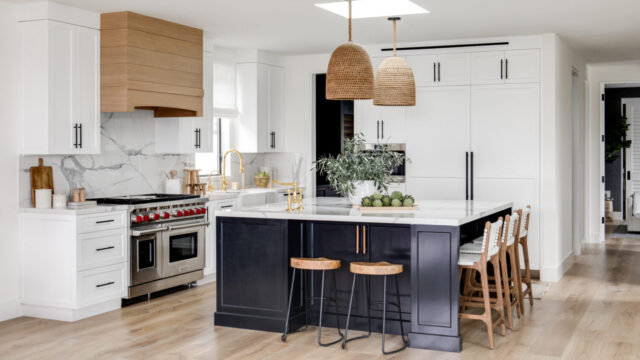
It’s the little decorative details that tie everything together into a cohesive, stylish kitchen space. Warm up an industrial space with earthy terracotta backsplash tiles. Add a pop of color with a coat of lively chartreuse paint on the lower cabinets. Finish your window treatments with pretty café style valances.
For walls, consider easy-to-clean glass tile or waterproof panels behind cooking zones. Decorate with framed art, photographs, chalkboards, and spice racks. Add greenery with a vertical garden, potted herbs, or a windowsill succulent garden.
Efficient Traffic Flow
Achieving an efficient traffic flow is paramount in kitchen design. The layout should facilitate easy movement between the three main work areas: the sink, refrigerator, and stove, often referred to as the kitchen triangle. This design minimizes congestion and ensures that the most frequently used areas are easily accessible. Incorporating wide walkways, strategically placed appliances, and clear pathways can significantly enhance the functionality of the space, making cooking and cleaning tasks more streamlined and less cumbersome.
Smart Storage Solutions
Innovative storage solutions are key to a clutter-free and organized kitchen. Pull-out shelves offer easy access to pots, pans, and other essentials without the need to dig through cabinets. Drawer dividers keep utensils and gadgets neatly organized, while vertical storage options, such as tall cabinet pull-outs, can efficiently store baking sheets and cutting boards. Implementing these smart storage solutions not only maximizes the available space but also keeps everything within reach, contributing to a more efficient and enjoyable cooking experience.
Multifunctional Workspaces
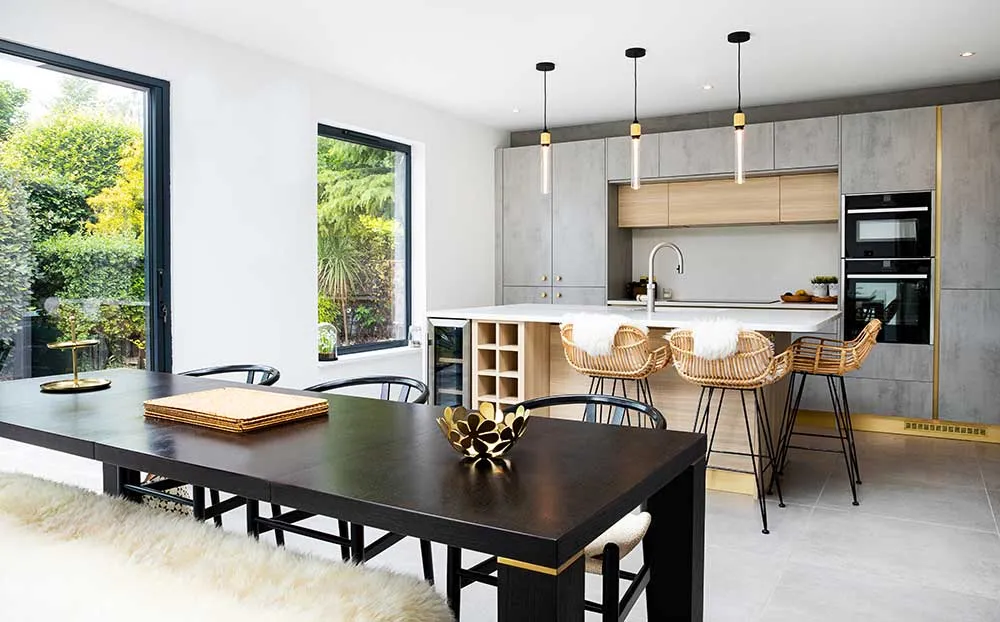
Multifunctional workspaces are a cornerstone of modern kitchen design. An island, for example, can serve multiple purposes: it’s a space for food preparation, casual dining, and even a spot for kids to do homework while meals are being prepared. Equipping an island with built-in storage solutions and seating options enhances its utility and fosters a more social and interactive kitchen environment. This approach to design not only maximizes the functionality of the space but also accommodates the diverse needs of today’s families.
Ergonomic Design
Ergonomics play a crucial role in kitchen design, aiming to create a comfortable and safe cooking environment. Designing with ergonomics in mind involves considering the optimal counter heights for the user, appropriate cabinet depths, and convenient appliance placement. For instance, ensuring that the microwave is at a safe height minimizes the risk of spills and injuries, while adjustable counter heights can accommodate the needs of all users, making the kitchen more accessible. Such considerations not only enhance comfort but also reduce the risk of strain and injury during kitchen tasks.
Sustainable Materials
Choosing sustainable materials for countertops, cabinets, and flooring is not only an environmentally responsible decision but also contributes to a healthier kitchen environment. Materials like bamboo for flooring or recycled glass for countertops are not only durable and aesthetically pleasing but also have a lower environmental impact. Additionally, using low-VOC (volatile organic compounds) paints and finishes can improve indoor air quality. Opting for sustainable materials reflects a commitment to environmental stewardship and ensures that the kitchen is both beautiful and eco-friendly.
Technology Integration
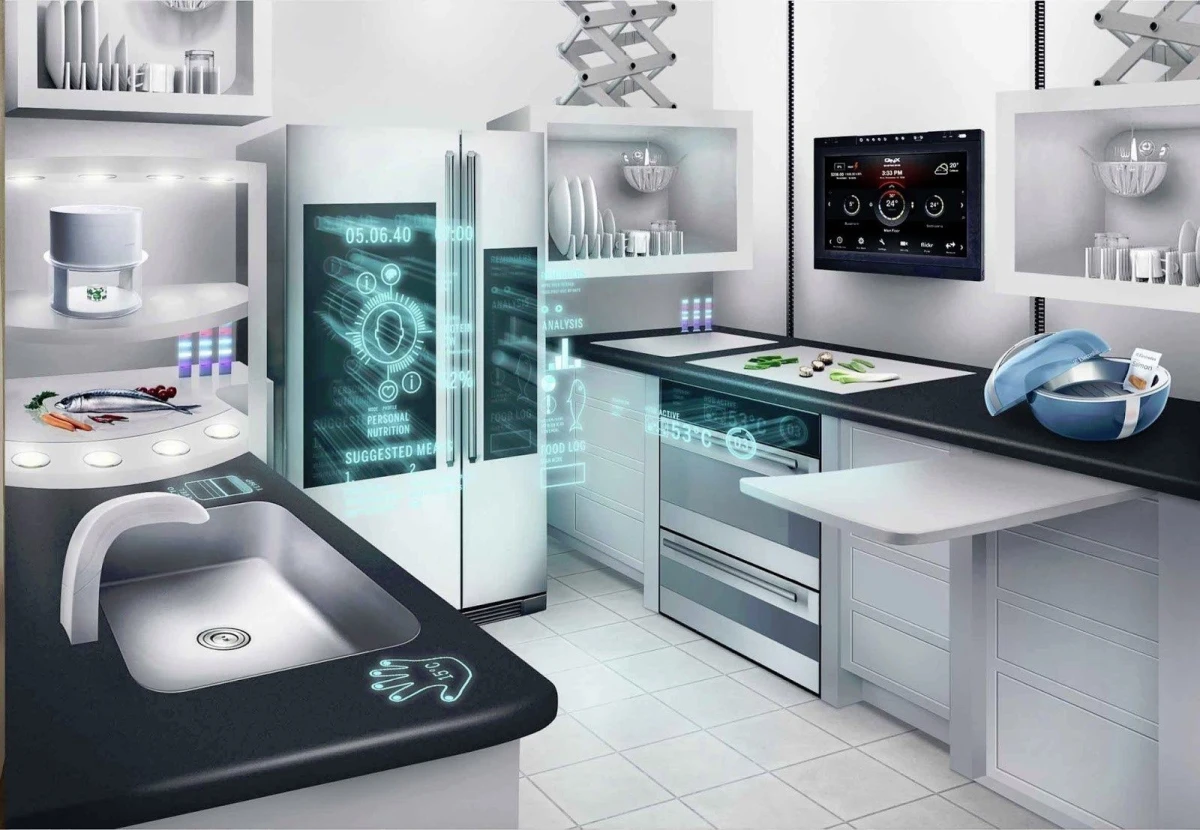
The integration of smart technology into the kitchen enhances both convenience and efficiency. Touchless faucets reduce water waste and improve hygiene, while Wi-Fi-enabled appliances allow for remote monitoring and control, offering greater flexibility and convenience. Built-in charging stations ensure that devices are always powered up and within reach, facilitating recipe look-ups or enabling entertainment while cooking. Incorporating these technological advancements into the kitchen design not only modernizes the space but also makes daily tasks more manageable and enjoyable.
Conclusion
Thoughtfully weigh both form and function when designing your dream kitchen. With some smart planning and purposeful design choices, you can fashion a kitchen that is equally practical and gorgeous.



